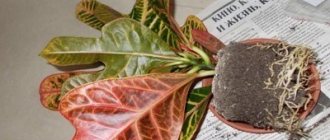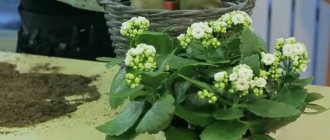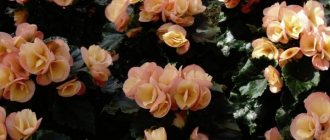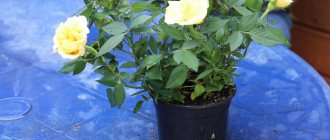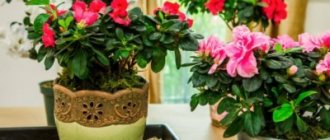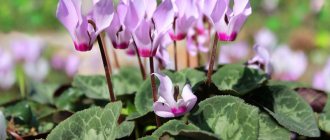Not many plants delight us with bright colors in cold weather. Increasingly, along with the green color of the needles, the bright leaves of the Christmas star are flashing in our homes. The plant has several other names: euphorbia, poinsettia (poinsettia), Christmas star, queen of euphorbias, star of Bethlehem, most beautiful euphorbia. In winter, this plant produces amazing leaf stars at the tops of its branches. The photo shows a flower with red leaves. Caring for the plant is simple, and many successfully preserve it after purchase, replanting and propagating it at home.
Legend and history
Many legends and tales dedicated to this amazing plant have been preserved. If you believe this legend, then the Christmas star owes its name to children from a poor family. Traditionally, the Mexican poor carried offerings to the newborn on Christmas Eve. But the children had nothing to give. Then they collected field herbs, which magically turned into fabulously beautiful flowers at the cradle.
But the poinsettia flower was named after Joel Poinsett. The American ambassador to Mexico was an enthusiastic person; he was interested in the flora of the tropics. In 1825, he was the first to bring these brightly colored branches to one of the American states.
The cuttings took root successfully, and Joel gave the plant the name euphorbia, after the ancient philosopher and healer. But among the people, the name poinsettia, which comes from the surname of the ambassador, stubbornly stuck.
In the tropical forests of its homeland, this shrub of the Euphorbiaceae family reaches three meters in height.
Botanical description
Poinsettia (from the Latin Poinsettia) is one of the most spectacular representatives of the Euphorbia genus of the Euphorbiaceae family. It comes originally from the tropical forests of Mexico, and now actively grows in the damp, shady expanses of Costa Rica, Guatemala and Central America. In favorable natural conditions, this evergreen shrub can reach 3 m in height. Indoor poinsettias are much more modest in size: from 15–50 cm.
The plant has simple branching stems and thick, bare branches. Its leaves are usually dark green, oblong-oval in shape, turning into a wedge at the base. The flowers are small, collected in rosette-shaped inflorescences. When the buds open, bright red bracts appear around them.
There are ampelous, standard and bushy varieties of this plant.
Important. Poinsettias often bloom in time for Christmas, usually between December and February.
Purchase rules
Advice! The joy of buying a living Christmas gift will not be overshadowed if you know some of the subtleties of choosing a poinsettia. When purchasing, carefully examine the flowers themselves. Make sure they are not yet covered in fluffy pollen and are brown or dark green in color.
And if the pollen is already ripe, then the Christmas star will not retain its bright color for long, and you will not be able to admire the perfection and sophistication of its shape. The plant will soon lose the elasticity of the leaves, they will curl and fall off. This is a natural process of wilting, but it largely depends on the conditions of the plant.
A healthy flower should be harmonious in shape. From any angle, the Star of Bethlehem should look attractive.
Overgrown, hooked branches indicate unprofessional shaping of the bush.
Varieties: description and photo
Thanks to the painstaking work of breeders, red-fire poinsettia has acquired many new varieties. Below are photos and a description of the most popular ones.
Premium Red
This variety can be considered a true embodiment of the Christmas star. The classic bright red color of the broadly lanceolate, pointed bracts matches perfectly with the greenish-yellow core.
Cortez Burgundy
It can be called an ideal variety for lovers of rich colors and traditionally laconic forms. Breeders developed a whole series of this variety of poinsettia, dedicating it to the conqueror of Mexico, Fernand Cortez.
Attention. Cortez Burgundy looks incredibly solemn and bright, thanks to the purple apical stipules.
Cortez Red
It is an equally attractive representative of this series. Its fiery scarlet bracts acquire dark green veins as the shoot develops.
Winter Rose
It is one of the first representatives of the species to have “double” leaves. Textured, intricately curved bracts transform the appearance of poinsettia, making it similar to a rose. Its greenish center is bordered by a luxurious rosette of fireplace leaves.
Winter Rose Early Red
Also incredibly similar to the queen of flowers. And its solemn red apical leaves will appeal to even the most demanding gardeners.
Strawberry and cream
It has coral-red foliage with small soft white spots.
Reference. The leaves of the “marbled” poinsettia Strawberry and cream are intricately cut, which makes them similar to the green mass of American oak.
Tapestry
This variety is endowed with bright scarlet bracts. But the leaves located down the shoot are decorated along the edge with an uneven yellow edging.
Carousel Dark Red
This variety stands out among others due to the unusual shape of its bract petals. Their edges seem to be curled, which is characteristic of only 2 varieties of poinsettia. Dark scarlet petals harmonize with modest greenish inflorescences.
Premium Ice Crysta
Can be called the most gentle representative of the Christmas star. Its pointed, heart-shaped leaves, located near a small green inflorescence, are distinguished by a bright scarlet color, reminiscent of a blush.
Jingle Bells
The variegated bracts of this variety of poinsettia seem to be dusted with light snow. And the fireplace-red leaves create a true pre-holiday mood.
Sonora White Glitter
A bright flower, reminiscent of festive fireworks, with white splashes on the fireplace leaves, looks very contrasting against the background of a dark green or purple edging.
Caring for poinsettias after purchase
It's no secret that flowers, after being purchased in a store, need to be replanted. They are planted in special soil for ease of transportation. It is enriched with microelements, but its structure is not intended for the long life of the plant.
In garden centers, flowers are fed regularly, saturating them with the substances necessary for life. They look cheerful and healthy in appearance. At home, it is difficult to provide a flower with the same care as in a store.
Over time, nutrients are washed out of the artificial soil, and the plant can become sick and die. Be prepared for the inevitable replanting of your poinsettia. During the holidays before the New Year, you can do more important things while the plant gets used to the new living conditions.
The adaptation period takes several weeks. But if it is not possible to provide a flowering plant with a new home, then it is permissible to leave it in the same pot, moderately feeding it with complex fertilizers so that the plant does not disappear.
When to replant a Christmas star
After the New Year holidays, poinsettia enters a dormant period: the leaves wither and fall off, the branches are exposed. This is a natural process, and it cannot be avoided even with proper care at home. The Christmas tree usually finishes flowering in early spring. The bush is cut at a height of 10 cm from the edge of the pot.
Advice! If you have not yet transplanted euphorbia, then this must be done in March. Prepare light, crumbly soil that does not retain moisture for replanting. Be sure to add small pebbles or expanded clay to the bottom of the pot for drainage.
At home, to transplant a flower into a new container, you can use a ready-made soil mixture containing humus, leaf, peat soil and sand. Usually the composition of the primer is written on the package.
Note! In the first month, it is enough to water a newly planted Christmas tree with clean water at room temperature, there is no need to apply fertilizer, and no additional care is required at this time. The plant must take root in the new environment and grow stronger.
It is important that the new container into which you transplant the poinsettia is slightly larger than the previous one. It is enough that its volume is approximately one and a half to two times larger than the root itself with a lump of earth. Don't forget that the more soil the pot holds, the longer it takes to dry out.
Poinsettia roots do not tolerate waterlogging well, and the flower will feel uncomfortable in a spacious home. After transplanting, move the euphorbia to a cool place, reducing watering to a minimum. Until May, the milkweed will gain strength to grow in order to bring joy and encouragement next year.
Features of care
The flower is unpretentious in care, so even a novice gardener can cope with this task. The important steps are:
- Proper lighting - the plant prefers bright diffused light without direct exposure to sunlight.
- Ambient temperature. During the flowering period it should not be lower than 14 degrees Celsius, during dormancy - about 12°C, the rest of the time - up to 25°C.
- Watering – abundantly in summer, moderately in winter. Avoid excessive waterlogging or drying out of the top layer of soil.
- Air humidity - to maintain the required level, the pot with poinsettia must be kept in a tray with damp expanded clay, and the leaves must be periodically sprayed with a spray bottle.
- Fertilizer - at the end of the dormant period, you should regularly feed the bushes, every 2 weeks from spring to autumn, apply a full range of mineral fertilizers.
- Transplantation - this procedure should be carried out annually in mid- to late spring.
In March, the stems are shortened by one third and placed in the sunny side, watered with warm water. When leaves appear, transplant into a larger pot with a slightly acidic substrate. Important. We must not forget about drainage, abundant watering and spraying. Up to 6 of the strongest shoots are usually left on the bush.
Modern varieties of poinsettia will decorate any interior, creating a festive mood on cold winter days. They are no longer as capricious and problematic to care for as they were before. By strictly following a number of simple rules for their maintenance, you can achieve long-term flowering of exotic beauties.
Caring for the plant after transplantation
In order for a flower to delight you more than once with its bright outfit, it needs a special approach.
The tropical plant is very light-loving, but it does not tolerate direct sunlight. Try to find the flower a bright, quiet place without cross ventilation. Crowding of plants also does not have the best effect on poinsettias.
She may even shed leaves if she is cramped. She also cannot stand the dominance of other plants. If you take your grown flower out into the garden for the summer, do not leave it in the open air in heavy rain. Euphorbias tolerate temporary dryness more easily than excess moisture.
Water the euphorbia bush depending on the conditions of its maintenance. If you doubt the need for watering, then examine the surface of the earth; if it is dry at a depth of 2 cm, then water the plant.
Start fertilizing when shoots appear. Poinsettias are quite suitable for fertilizers for flowering plants with microelements. At home, after transplantation, plants should be fed no more than twice a month.
How can a flower be dangerous for humans?
The fact that the flower belongs to the Euphorbiaceae species indicates toxicity. The sap of the plant is caustic, it causes irritation of the skin and mucous membranes, and provokes allergic reactions. Dermatitis threatens people with sensitive skin; the juice can cause serious lesions.
Attention!
It is quite dangerous for the eyes, causing even temporary blindness, so you need to control your movements so as not to accidentally rub your eyes with your hand in the juice.
There is also an opinion that poinsettia can be poisoned if it gets into the esophagus. But, fortunately, this is not the case; to be poisoned, a person or pet would have to eat at least 500 leaves. Although eating them even in small quantities is still not worth it, so as not to cause digestive upset.
The juice contains cyanogenic compounds, euphorbic acid, euphorbin; the bright bracts are especially rich in anthocyanins, which give such a pigment.
For safety, it is better to care for the flower with gloves or wash your hands after contact. Then the plant will be completely safe for the owner. If there are small children or animals in the house, then place the flower out of their reach.
Correct bush formation
If you do not prune after flowering, then the Christmas star will actively grow and will never bloom again. The next stage of formation begins when the poinsettia emerges from hibernation. As soon as sprouts appear on the bush, you should leave 4-5 branches in different directions and cut off the rest. At home, a sharp knife is used for this purpose, since cuts from scissors do not heal for a long time, and the bark on the trunk may peel off.
After formation, the bush quickly grows a new crown.
The photo will help you make sure that the correct formation of euphorbia gives it the appearance of an elegant holiday bouquet.
To rejuvenate the plant, when the bush becomes very elongated and the branches become bald, pruning is carried out. In this case, the shoots are cut short, leaving 5-6 buds on them. The branches grow quickly. When pruning the plant, do not forget that the juice of euphorbias is very poisonous and can cause irritation and allergies if it comes into contact with the skin. Cut parts of branches can be used for rooting. A Christmas gift, conceived long before the holiday, will pleasantly surprise your loved ones.
Preparing the plant for flowering
To make the winter outfit of the Christmas tree appear on time, do the following:
- Shorten the flower's daylight hours. Every evening for 14 hours, hide the flower in a dark closet with the doors tightly closed. Not a single ray of light should penetrate the shelter. Even a weak light from an electric light bulb can prevent leaves from coloring.
- Leave the flower in the light during the day.
- Water and fertilize the plant as usual.
- Follow this regimen for 10 weeks.
- If signs of staining appear on the leaves, the darkening can be stopped.
- Don't apply fertilizer.
- To prolong flowering, the air temperature should be approximately 14°C
- If there are a couple of weeks left before the holidays, and you have not had time to prepare the poinsettia for winter flowering, then you can cause the leaves to turn red in the following way: keep the queen of euphorbias “dark” for almost the entire day. Place it in the light for 2-3 hours.
If these conditions are met, your beauty will bloom for 4 to 6 months. Contrary to popular belief, an annual plant, purchased or gifted on the occasion of a holiday, is renewed annually and will become a decoration and talisman of your home.
Poinsettia propagation at home
At home, in tropical forests, poinsettia reproduces by seeds. Once on the ground, they produce numerous shoots. But with artificial breeding, this option is not the most successful. All varieties of the most beautiful milkweed, which breeders are proud of, are the result of their many years of work.
The seeds of these plants do not retain varietal characteristics. The resulting samples are not so bright and colorful, in addition, their juice is quite poisonous. Trying to propagate a tropical plant by seeds not only makes no sense, but is also quite unacceptable because of the danger.
The only remaining method is vegetative propagation. At home, it is quite easy to propagate this wonderful plant by cuttings. The upper part with five to six buds is cut off from the elongated shoot. The cutting should be soaked in water at room temperature, then dried and powdered with activated carbon. Plant several treated branches in a pot. After rooting, you will get a lush, beautiful bush that does not require careful care.
Important! Part of the plant planted for rooting should not be buried more than a centimeter into the ground.
In the video you can learn about caring for, pruning, and replanting poinsettias at home after purchase.
Pests and diseases of poinsettia
The Christmas star feels good in conditions close to its native climate. A native of the tropics needs sufficient humidity, moderate watering, light and the absence of drafts for full growth and flowering. If these conditions are violated, the bush may lose its attractiveness, wither and become sick.
The main enemy of milkweed is the whitefly, an insect similar to a white moth that settles on the underside of the leaf. The problem must be dealt with immediately, as insects multiply quickly. While the pest population is small, you need to wash the flower, then generously spray the leaves with an insecticide solution.
Dry air can lead to the proliferation of spider mites and scale insects; they literally entwine the delicate poinsettia. Affected leaves become covered with a yellow coating. Ticks are difficult to notice with the naked eye. Measures to combat this pest are similar - spraying with chemicals.
Poinsettias are often affected by mealybugs. They are easy to spot on the leaves. It is necessary to act immediately, otherwise the plant infected with the parasite will die in a short time.
Advice! In addition to the soap solution, the plant is thoroughly washed with an alcohol solution or treated with available chemicals of the appropriate type.
Fungus gnats can cause damage to the root system. This is a winged midge several millimeters in size; its larvae settle in the root system of the plant, causing significant damage to it. The sooner you start fighting the midge, the fewer plants will be infected with its larvae. Raptor can be used against flying insects, and any drug against soil pests will help against larvae. One of the popular methods is to mulch the surface of the earth with expanded clay. The attentive eye of the gardener will help you see pests in time and take timely measures.
If the Christmas star is provided with good care at home, then this amazing home flower will bring joy and fun to the house. The Star of Bethlehem will help you get rid of causeless worries. Guests come to a house decorated with Christmas bushes more often. It is no coincidence that poinsettia owners note in their reviews that this is the best Christmas gift that brings joy, peace of mind and hope for the revival of all living things.
How do you like the article?
Caring for flower health
The beauty of the Christmas star is appreciated not only by people, but also by various pests, for example, mealybugs. Having noticed this scourge, you should wipe the leaves of the plant with alcohol or soap solution. The preparations Komandorm and Fitoverm have proven themselves well in the fight against scale insects.
Another “admirer” of a beautiful flower is the spider mite. It is destroyed by rubbing the stems and leaves of the plant with tobacco infusion.




